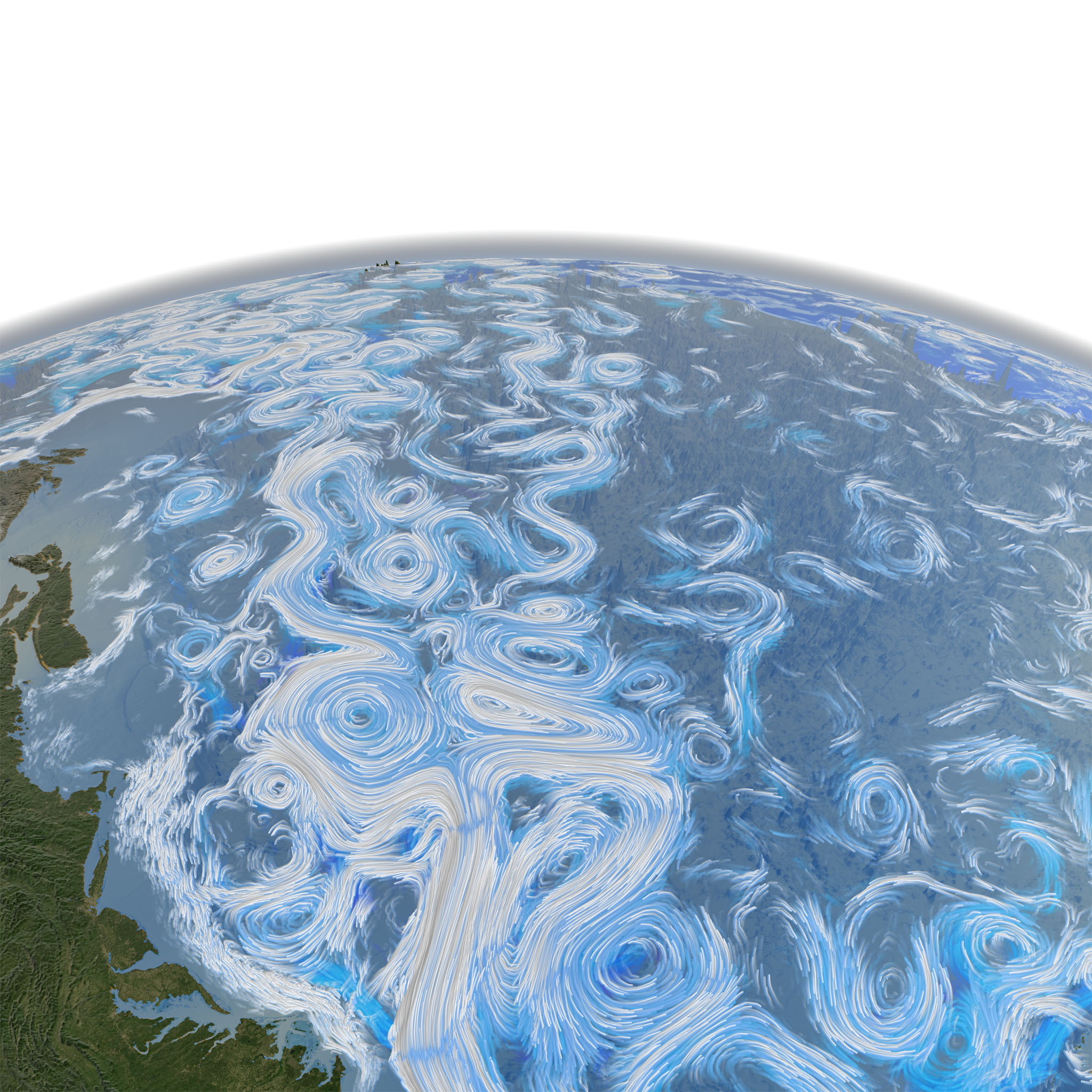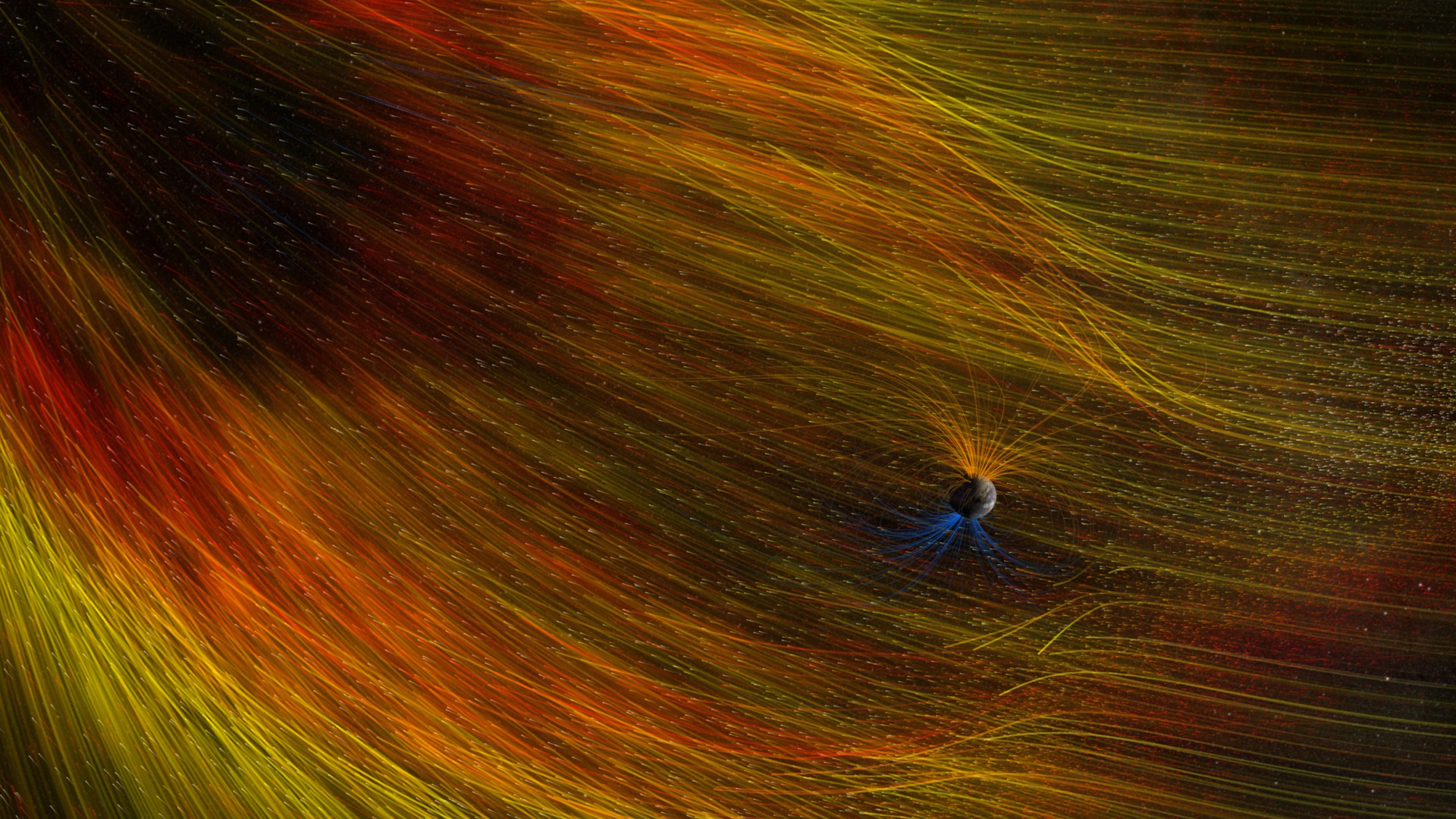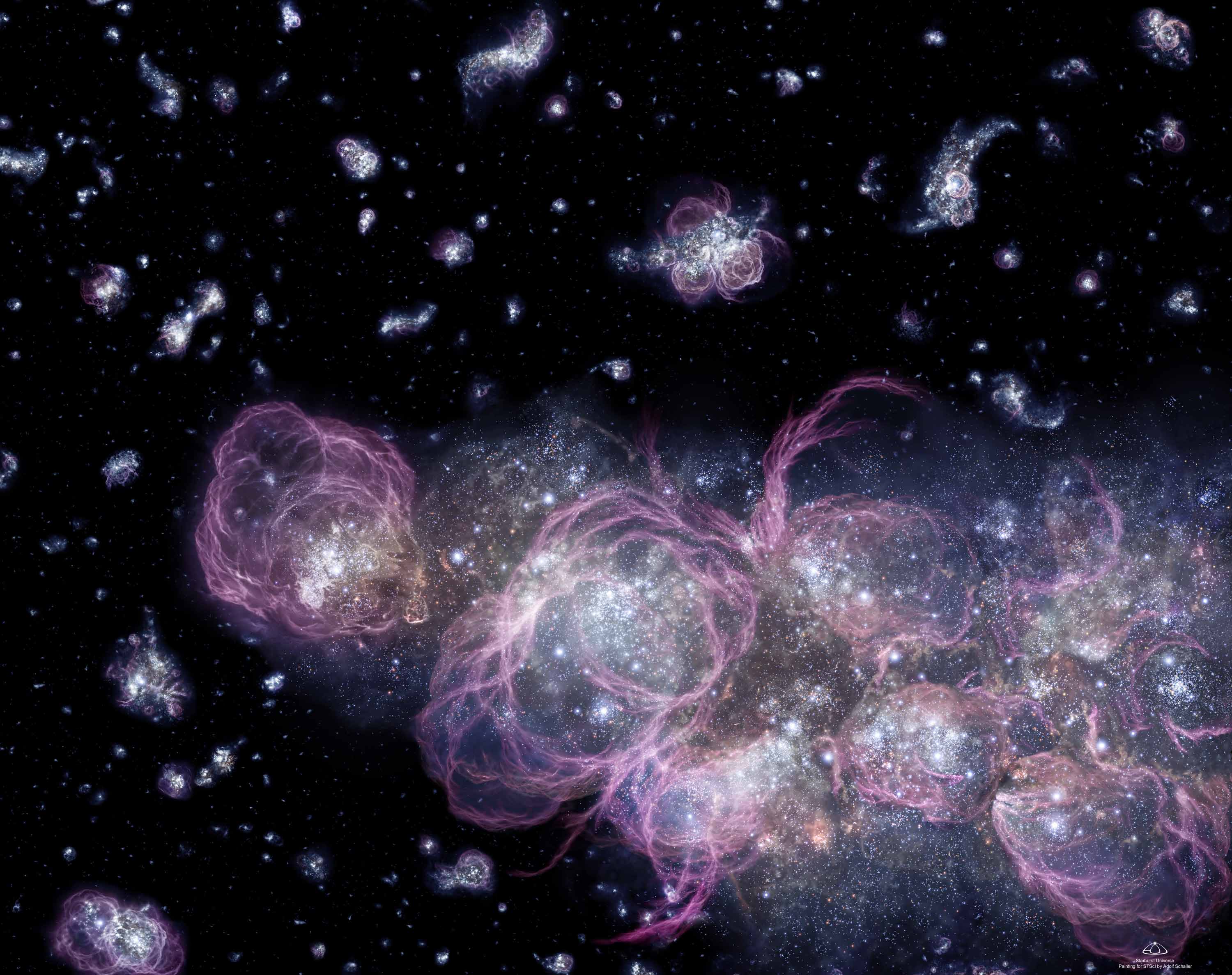Excerpt from "Dynamic Earth"
A giant explosion of magnetic energy from the sun, called a coronal mass ejection, slams into and is deflected completely by the Earth's powerful magnetic field. The sun also continually sends out streams of light and radiation energy. Earth's atmosphere acts like a radiation shield, blocking quite a bit of this energy.
Much of the radiation energy that makes it through is reflected back into space by clouds, ice and snow and the energy that remains helps to drive the Earth system, powering a remarkable planetary engine — the climate. It becomes the energy that feeds swirling wind and ocean currents as cold air and surface waters move toward the equator and warm air and water moves toward the poles — all in an attempt to equalize temperatures around the world.
A jury appointed by the National Science Foundation (NSF) and Science magazine has selected "Excerpt from Dynamic Earth" as the winner of the 2013 NSF International Science and Engineering Visualization Challenge for the Video category. This animation will be highlighted in the February 2014 special section of Science and will be hosted on ScienceMag.org and NSF.gov
This animation was selected for the Computer Animation Festival's Electronic Theater at the Association for Computer Machinery's Special Interest Group on Computer Graphics and Interactive Techniques (SIGGRAPH), a prestigious computer graphics and technical research forum. This is an excerpt from the fulldome, high-resolution show 'Dynamic Earth: Exploring Earth's Climate Engine.' The Dynamic Earth dome show was selected as a finalist in the Jackson Hole Wildlife Film Festival Science Media Awards under the category "Best Immersive Cinema - Fulldome".
Follow a coronal mass ejection as is passes Venus then Earth, and explore how the sun drives Earth's winds and oceans.
For complete transcript, click here.
Also available for the entire Dynamic Earth show are the transcript and the educator's guide.

A coronal mass ejection erupts from the Sun.

A coronal mass ejection approaches Venus.

A coronal mass ejection passes Venus.

Ocean currents of the Gulf Stream.

Ocean currents beneath the Gulf Stream.

The loop current feeds into the Gulf Stream.
Follow a coronal mass ejection as is passes Venus then Earth; and explore how the sun drive Earth's winds and oceans. This version has an alternate narrator.
For complete transcript, click here.
Unnarrated, edited version with just the Sun to Earth coronal mass ejection (with a Venus flyby).

The entire sequence, unnarrated and formatted for the Hyperwall.
Starting from the coronal mass ejection and formatted for the Hyperwall.
Shows the coronal mass ejection only, and formatted for the Hyperwall.
Shows the wind flows only, and formatted for the Hyperwall.
For More Information
- Computer Graphics
- Corona
- Coronal Mass Ejections
- Coronal Properties
- Earth Science
- Earth's Solar Shield
- HDTV
- Heliophysics
- Hyperwall
- Magnetosphere
- Narrated
- ocean circulation
- ocean currents
- Ocean Floor
- Ocean Heat Transfer
- Ocean Waves
- Oceans
- Physical geography
- Physical oceanography
- SDO
- Sea Surface Topography
- Solar Activity
- Solar Dynamics Observatory
- Solar Flares
- Solar Phenomenon
- Solar Ultraviolet
- Solar Wind
- Space Weather
- Sun-earth Interactions
Credits
Please give credit for this item to:
NASA/Goddard Space Flight Center
-
Animators
- Greg Shirah (NASA/GSFC)
- Horace Mitchell (NASA/GSFC)
- Tom Bridgman (Global Science and Technology, Inc.)
-
Ernie Wright
(USRA)
- Trent L. Schindler (USRA)
-
Cindy Starr
(Global Science and Technology, Inc.)
- Lori Perkins (NASA/GSFC)
-
Video editor
- Stuart A. Snodgrass (HTSI)
-
Narrators
- Liam Neeson (Self)
- Michael Starobin (HTSI)
-
Producers
- Thomas Lucas (Thomas Lucas Productions)
- Horace Mitchell (NASA/GSFC)
- Greg Shirah (NASA/GSFC)
-
Writer
- Thomas Lucas (Thomas Lucas Productions)
Series
This page can be found in the following series:Tapes
The media on this page originally appeared on the following tapes:-
Dynamic Earth
(ID: 2012069)
Tuesday, June 19, 2012 at 4:00AM
Produced by - Werner Benger (NASA)
Datasets used
-
BMNG (Blue Marble: Next Generation) [Terra and Aqua: MODIS]
ID: 508Credit: The Blue Marble data is courtesy of Reto Stockli (NASA/GSFC).
This dataset can be found at: http://earthobservatory.nasa.gov/Newsroom/BlueMarble/
See all pages that use this dataset -
Tycho Catalogue (Tycho 2 Catalogue) [Hipparcos: Telescope]
ID: 550This dataset can be found at: http://archive.eso.org/ASTROM/
See all pages that use this dataset -
Magnetic Field Lines (Luhmann-Friesen) [Luhmann-Friesen Magnetosphere Model (1979)]
ID: 615Journal of Geophysical Research, vol. 84, Aug. 1, 1979, p. 4405-4408
This dataset can be found at: http://adsabs.harvard.edu/abs/1979JGR....84.4405L
See all pages that use this dataset -
MERRA
ID: 684 -
Enlil Heliospheric Model (Enlil Heliospheric Model)
ID: 685MHD solar wind simulation
See all pages that use this dataset -
BATS-R-US Magnetosphere Model
ID: 686MHD Magnetospheric simulation
See all pages that use this dataset -
ECCO2 (ECCO2 High Resolution Ocean and Sea Ice Model)
ID: 707
Note: While we identify the data sets used on this page, we do not store any further details, nor the data sets themselves on our site.
Release date
This page was originally published on Tuesday, June 19, 2012.
This page was last updated on Thursday, March 27, 2025 at 12:19 AM EDT.









![Music credit: "Gear Wheels" by Fabrice Ravel Chapuis [SACEM] from Killer Tracks Complete transcript available.Watch this video on the NASA Goddard YouTube channel.](/vis/a010000/a013200/a013291/BITSE_ReadyForFlight_YouTube.00283_print.jpg)
![Watch this video on the NASA Goddard YouTube channel.Complete transcript available.Music credits: “Boreal Moment” by Benoit Scarwell [SACEM]; “Sensory Questioning”, “Natural Time Cycles”, “Emerging Designer”, and “Experimental Design” by Laurent Dury [SACEM]; “Superluminal” by Lee Groves [PRS], Peter George Marett [PRS] from Killer Tracks](/vis/a010000/a013200/a013275/13275_AstronautRadiation_Twitter.01205_print.jpg)
![Complete transcript available.Music credits: ‘Electricity Wave’ by Jean-François Berger [SACEM] and ‘Solar Winds’ by Ben Niblett [PRS], Jon Cotton [PRS]Watch this video on the NASA Goddard YouTube channel.](/vis/a010000/a012600/a012693/LARGE_MP4-12693_FirstCMEDuringEclipse_large.00139_print.jpg)
![Music: Anywhere by François Pavan [SACEM], Mi-Yung Pavan [SACEM]Complete transcript available.](/vis/a010000/a012600/a012629/LARGE_MP4-12629_AMOCcarbon_large.00001_print.jpg)